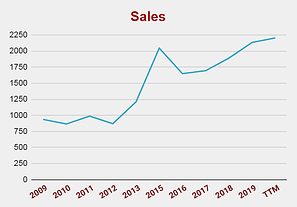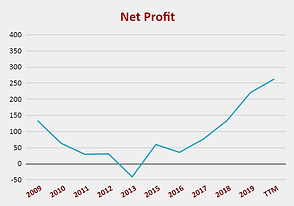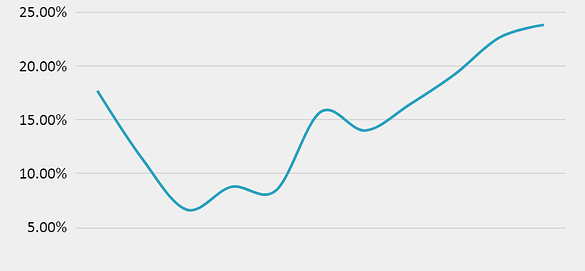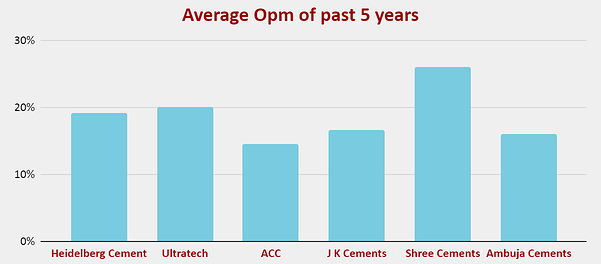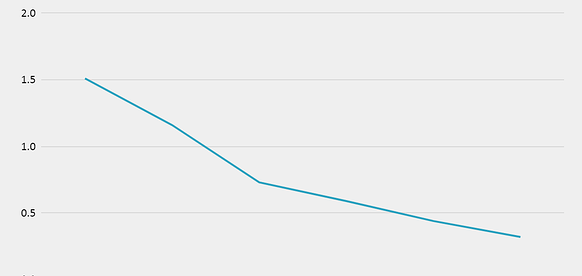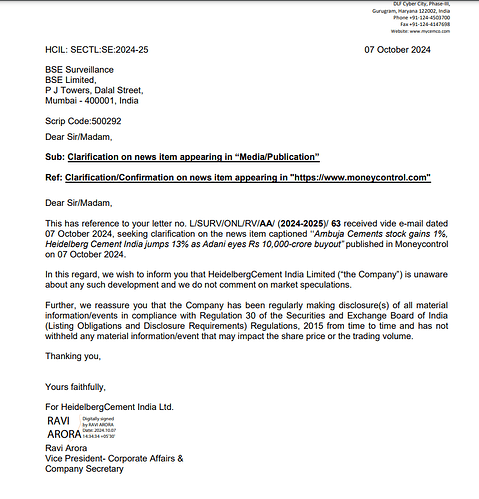Heidelberg Cement India Limited
Background:
Heidelberg Cement India Ltd. (market cap ~3500 Cr.) is a subsidiary of global parent HeidelbergCement Group, based out of Germany. The parent company is one of the leading players in the world (ranks no. 2 in cement), with presence in more than 60 countries.
It entered India in year 2006, in a 50:50 joint venture with Indorama cements. It also acquired majority stakes in other companies like Mysore cements and Cochin cements. By 2008, the company fully acquired Indorama cements and in 2009 merged its operations with Mysore cements. The resulting entity was renamed as Heidelberg Cement India Ltd (or HCIL).
The company underwent brownfield expansion which it completed in 2013-14, the capacity of the company increased to 5.4 Mtpa (from 3.07 Mtpa in 2009). By 2019, the plants were running at above 90% utilisation rate, so the company commissioned debottlenecking plans to further increase its existing capacity by march 2020. The present capacity now stands at 6.26 Mtpa (as against total India capacity of nearly 490 Mtpa)
Company has its operations in Damoh (M.P.), Ammasandra (Karnataka) and Jhansi (U.P.). Majority of the sales of the company (~95%) comes from Central India. Products of the company include PPC (Portland Pozzolana Cement) and PSC (Portland Slag Cement) and it markets them under the brand name mycem. The brand has a niche but decent market in Central India.
Company’s performance and Financials: (all data from screener.in)
Here are the sales and profit charts of the company for the past 10 years (in Cr.)
Please note that the jump before 2015 and dip after that is because the company changed its accounting year in 2014. So FY15 included 15 months instead of 12 (from jan. 2014 to march 2015).
A glance over the past 10 year performance, in aggregate, looks very ordinary. Sales have grown at cagr of 10.8%, while net profit at 5.5%. However, after the company finished its brownfield expansion in 2013, there has been a significant improvement in its performance. The same is reflected in past 5 years data- sales have grown at 12% cagr, while profits at 49.4%.
Over the years, the company has resorted to various cost cutting measures and optimisation of its facilities. Some major ones are highlighted below-
- Installed a waste heat recovery power plant at its Narsingh clinker unit in Damoh. This meets 37% of the power requirement at the plant.
- Optimised fuel mix- kilns that were designed to operate on coal were upgraded to burn petcoke as well.
- The company installed an enormous 21 Km long overland conveyor belt system to transport limestone from its mines in Patheria (M.P.) to its clinker facility at Narsingh, Damoh. This not only helps in reducing transportation cost but also loading/unloading times.
- For its Ammasandra unit (Karnataka), the company has entered into a 25 year solar power purchase agreement which will meet 50% power consumption of the plant.
- Cement is a low value and high volume commodity and as such freight costs are significant. As per company’s annual report 2017-18, HCIL has one of the lowest freight cost in industry. This has been achieved by adopting a flexible and dynamic mix of rail-road deliveries. The company has also entered into some long term tariff agreement with Indian Railways (not aware about details).
Because of above several measures, the overall operating performance of the company has improved over the years. Operating margin has increased 1.5 times from 16% in 2015 to ~24% TTM and is clocking right up there with the big boys for the past few years (only Shree Cement significantly ahead). Roce also improved from 9% in 2015 to 25% in 2019.
The company achieved an inventory turnover of above 14 last year (highest in industry) and an asset turnover of 1.25. Ebitda/tonne efficiency as per last year’s annual report was Rs 987. While part of all of that may be due to higher utilisation levels of its existing capacities (above 90%) and lower base, improvement in these numbers along with operating margin does suggest the company’s brand has good growing visibility in the region.
This further gets reflected in the number of receivable days, which is ~5, and has been that way since 2015. Likewise working capital to sales is less than 5% and again most impressive in the industry. All these suggest excellent cash generating capabilities of the company, total cash flow from operations over the past 5 years is 3 times its total profits after tax for the same period.
Consequently, the company has been able to reduce its debt considerably, and because of excess cash has also started paying dividends. Borrowings of the company reduced from Rs. 1299 Cr. in 2015 (D/E ratio= 1.51) to Rs 398 Cr. in sept. 2019 (D/E ratio=0.32).
Outlook:
In the short to medium term, due to the present lockdown and migration of labours, cement demand is going to be affected severely as per many analysts’ reports. For example, Crisil expects fall in demand to be between 10-15% this year even in the best case scenario, In the worst case it can be upto 20-25% (link)
For the cement industry, quarter 4 and quarter 1(summer) are the strongest, and both of them have been impacted, while the monsoon quarter (which is upcoming) is weakest. The fall in prices of crude however may provide some relief if the govt. decides to pass some of its benefit to industry/retail as it will reduce the freight costs. A lot will however depend upon govt spending on construction related activities and the easy availability of home loans.
In the long term, as per this ibef report (link), cement demand is expected to grow at 1.2 times gdp growth.
Risks and Concerns:
-
Cement is a cyclical commodity. As such demand, supply, margins etc. depends on a lot of factors that are often outside companys’ control.
i). A cut in government’s spending on infrastructure, rise in home loans, general well being of the economy- all can affect demand.
ii). Major raw materials used are- Limestone, coke and petcoke (as fuel), flyash, slag, gypsum and water. Transportation costs are also significant and hence petrol/diesel prices also affect margins. -
Industry is very competitive and fragmented. There are many small and large players and there is always a chance of oversupply. Besides, in case of an economic slowdown, growth can come only from snatching market share of other companies which is not easy as 70% of the market share belongs to large companies who already have good brand loyalty.
-
Having mining access to limestone reserves, especially near the plants, is perhaps the biggest competitive advantage. Though HCIL does have mining rights (in Patheria Mines, near Damoh, M.P.) but procuring new access to limestone reserves may pose a challenge when the company decides to move to newer geographies.
-
The parent group has other subsidiaries in India besides HCIL, like- Cochin Cements, Zuari Cements (considerable presence in South India). Thus the parent group has significant presence both in Central India(through HCIL) and South India. And taking capacities of all into account then it is already among top 10 biggest cement companies of India.
Further management has indicated they are open to inorganic expansion (acquiring other companies) in other parts of India. While any such move will definitely benefit the parent group, it remains to be seen how that will benefit HCIL. As from growth point of view, it will be a huge negative if the company is constrained to operate only in Central India.
Miscellaneous:
-
Permanent employee strength- 1231, temporary/contract basis- 2974 (as per last year’s annual report)
-
Promoter holding- 69%, pledge- 0%
-
None of the members of key managerial personnel (KMP) hold any shares in the company.
-
Total Remuneration paid to directors and KMP (including commission, sitting fees etc.) - Rs 6.55 Cr (% of total profit- 3%, % of total employee expense- 5.28%).
-
Many of the directors and upper management of HCIL also hold key positions in other Indian subsidiaries of the parent group (Zuari cements, Cochin cements).
-
Current Market Cap- Rs 3580 Cr., P/E - 13.63, P/B- 2.9, EV/Ebitda- 6.1.
Disc.- Invested (10% of portfolio) and as such views expressed above might be biased.

